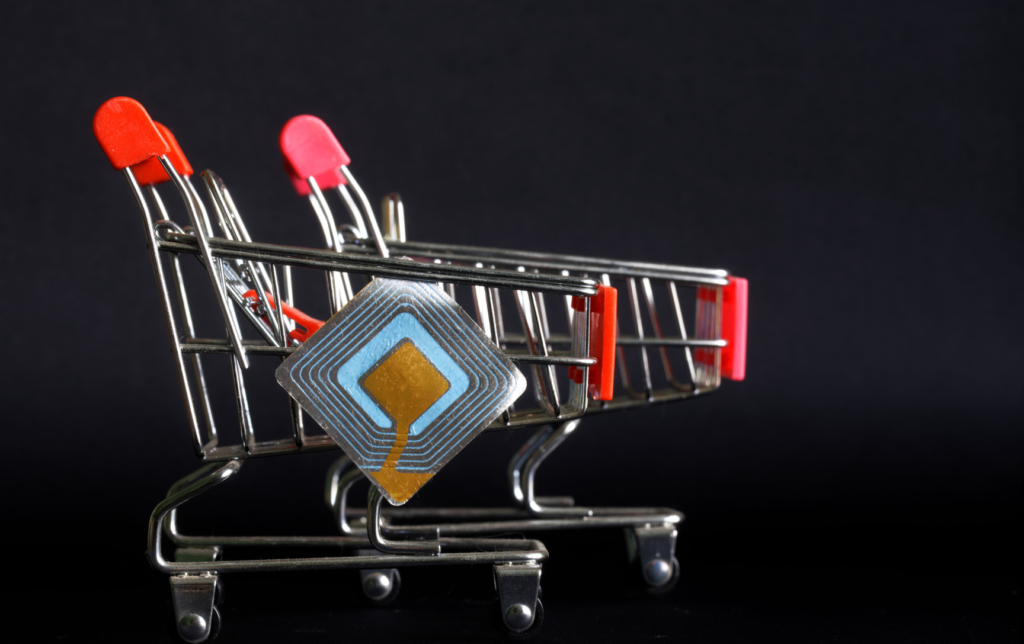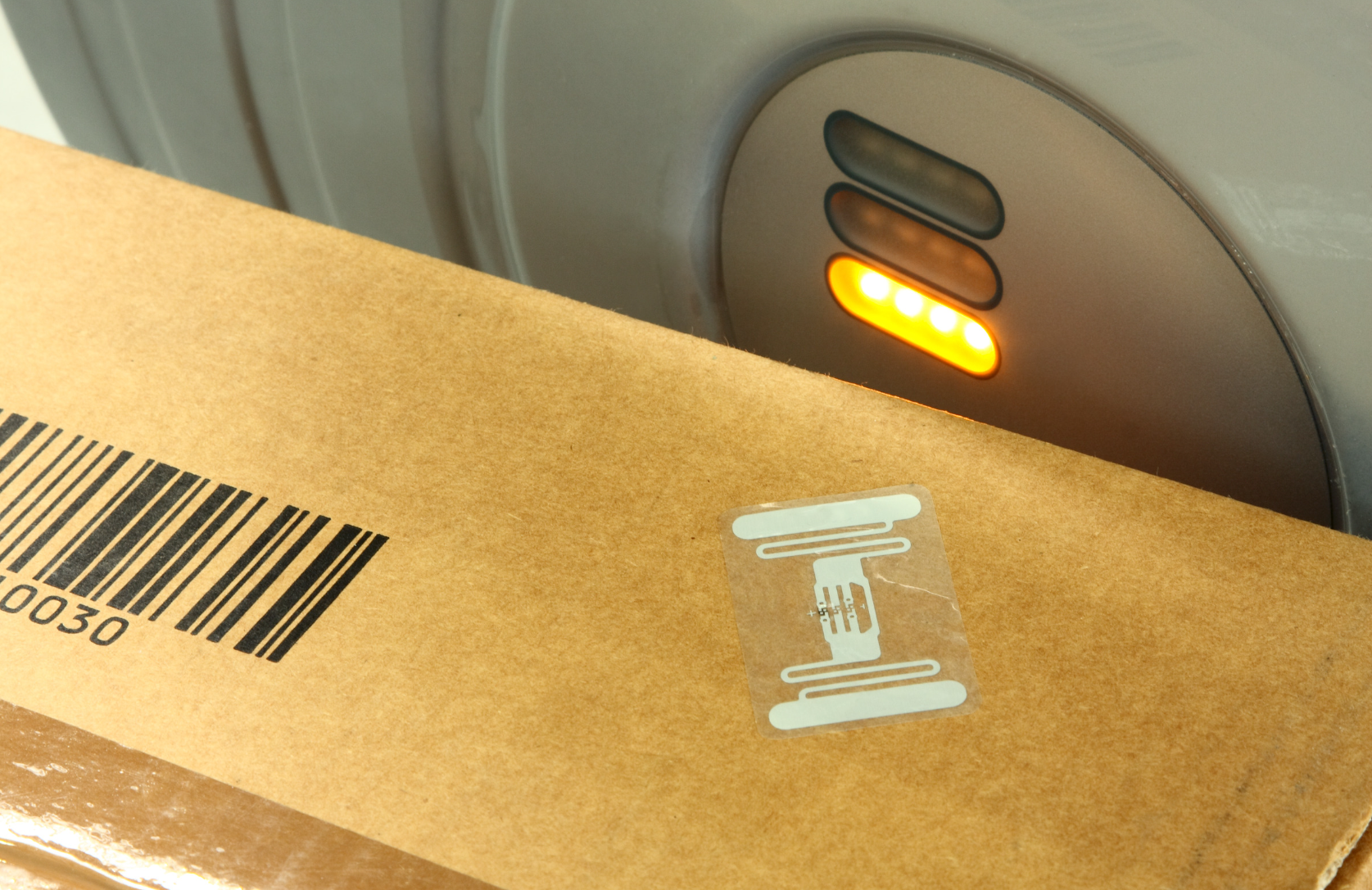How to Choose the Right RFID Tags for Your Business Needs


Think about the last time you ordered something online and tracked it to your doorstep. Now, imagine being able to manage thousands of items just as easily. That’s exactly what happened with Zara, a leader in the fast fashion industry. We will explore how to choose the right RFID tags for your business.
By implementing the right RFID tags, Zara transformed their entire inventory process, slashing the time it takes to handle goods and virtually eliminating stock discrepancies. It’s a prime example of RFID tags in action, turning potential logistical nightmares into streamlined successes.
RFID technology is more than just a tracking tool—it’s a powerhouse for business optimization. The benefits are tangible, whether it’s speeding up checkout lines, improving stock accuracy, or even boosting customer satisfaction by ensuring that popular items are always in stock. This technology isn’t about the future; it’s reshaping how businesses operate.
In this guide, we’ll break down how you can leverage RFID to keep up with the competition and outpace them. By understanding and choosing the right RFID tags for your business needs, you’re setting the stage for smoother operations, better accuracy, and, ultimately, stronger growth. Let’s dive in and find out how to make this technology work for you.
The Unexpected Truth About RFID Tags
RFID technology often sounds like something straight out of a sci-fi movie, but it’s pretty straightforward and surrounded by quite a few myths that need busting.
Myth 1: RFID is fancy barcoding
While it’s true that both RFID and barcodes are used for tracking, that’s about where the similarities end. Unlike barcodes, RFID doesn’t require a line of sight to scan. An RFID reader can process multiple tags simultaneously and capture data from tags hidden inside boxes or behind other items. This makes it exponentially faster and more versatile than traditional barcoding.
Myth 2: RFID is prohibitively expensive
Back in the day, this was closer to the truth. Today, however, the cost of RFID technology has plummeted, making it accessible even for smaller businesses. The return on investment, given its efficiency, can be substantial, often paying for itself quicker than many expect.
Myth 3: RFID invades privacy
There’s a big concern that RFID tags can track you wherever you go. However, most RFID tags used in retail and inventory management have a very limited range and are only active within specific environments. They’re not designed to be personal spies.
RFID uses electromagnetic fields to identify automatically and track tags attached to objects. The tags contain electronically stored information that can be read up to several feet away. They don’t need batteries (unless you’re dealing with active RFID tags, which are a different beast), and they can be as small as a grain of rice.
The system consists of three parts: the RFID tag, the RFID reader, and the antenna. The tag has a microchip that stores its data and an antenna that receives and transmits a signal. The reader also has an antenna, which it uses to send out a signal that activates the tag. Once activated, the tag sends back its data to the reader.
This simple setup can revolutionize how a business tracks its inventory, manages supplies, and interacts with customers. By clearing up these misconceptions, it’s easier to see the potential RFID holds to streamline operations and enhance data accuracy without breaking the bank or creeping on your privacy.
Choosing RFID Tags for Your Business
Selecting the right RFID tags for your business is like assembling the perfect team. Just as you would choose team members whose skills match the job requirements; you must pick RFID tags that fit your business needs.
Matching Skills to Jobs
Imagine you’re a coach putting together a soccer team. You wouldn’t pick a goalkeeper based solely on their ability to run fast; you need someone who can block shots. Similarly, choosing RFID tags isn’t about going for the ‘best’ or most expensive—it’s about finding the right fit. Different tags have different strengths, and you’ll want to match those strengths with what your business needs.
Key Features of RFID Tags Explained Through a Sports Analogy
- Frequency – Think of frequency like the position a player plays in soccer. As forwards, midfielders, and defenders play different roles, RFID frequencies (low, high, and ultra-high) suit different environments and jobs. Low-frequency tags work well close-up and are great for environments with lots of interference, much like a defender. High-frequency tags are like midfielders, offering more range and speed in scanning, suitable for tracking items in retail stores. Ultra-high frequencies are the forwards, providing the longest read ranges, ideal for tracking moving objects over long distances.
- Memory – Memory on an RFID tag is like a player’s game knowledge. The more memory the tag has, the more data it can store, which is crucial if you need to keep detailed information on the tag rather than just a reference number linking to a database.
- Read Range – This is how far away a tag can be read from. It’s like the shouting range of a coach or a quarterback: some need to be heard from the far end of the field (long-range), while others only need to communicate in huddles (short-range).
- Durability – Like sports gear, some RFID tags must withstand more roughness than others. If you’re tracking items outdoors or in harsh environments, you need a tag as tough as a football helmet. For office settings, something less rugged might be more akin to a baseball cap.
Top RFID Companies in World
When you’re scouting the best in the RFID game, a few big names always come up. These companies are the all-stars of the RFID world, each bringing unique innovations and real-world solutions that have significantly shaped the industry.
| Zebra Technologies | Impinj | Alien Technology | NXP Semiconductors |
| Pioneering Technology: Zebra Technologies pioneered RFID readers and tags. They make ultra-durable RFID tags that can withstand almost anything | Pioneering Technology: Impinj’s Monza chips are superior in read range and speed, making them ideal for managing large volumes of items quickly. | Pioneering Technology: Alien Technology makes affordable, high-efficiency RFID tags essential for businesses looking to implement RFID systems. | Pioneering Technology: NXP’s high-security RFID solutions include cryptography for sensitive tags. |
| Customer Story: Walmart uses Zebra’s RFID solutions to track millions of products in their stores and warehouses to stock shelves and reduce inventory losses. | Customer Story: Impinj tags have transformed hospital supply management by keeping vital equipment in stock and easy to find. | Customer Story: Alien’s affordable RFID solutions have helped small and medium enterprises streamline operations. | Customer Story: Luxury goods retailers use NXP RFID tags to verify product authenticity and prevent counterfeiting. |
| Industry Impact: Zebra’s technologies are trusted in harsh environments and costly failures. | Industry Impact: Impinj has promoted RFID in healthcare, proving that it can support vital services beyond retail and logistics. | Industry Impact: Alien has democratized RFID technology, allowing more businesses to benefit. | Industry Impact: NXP’s security focus has expanded RFID’s fraud prevention and product authentication capabilities, reassuring customers and businesses. |
RFID Software Companies
While RFID tags and readers are the stars on the field, it’s the RFID software that plays the role of coach, making sure everything works together seamlessly. The right RFID software can enhance the system’s effectiveness, ensuring data from tags is turned into actionable insights.
Software AG
- What Makes It Unique: Software AG specializes in integrating RFID data with your existing IT infrastructure, ensuring that information flows smoothly from the warehouse to the web.
- Why It’s a Great Choice: For businesses looking to blend RFID data with other tech systems like ERP or supply chain management software, Software AG provides a robust solution that bridges the gap.
Checkpoint Systems
- What Makes It Unique: Known for their focus on retail, Checkpoint Systems offers software that tracks inventory and enhances loss prevention and merchandising.
- Why It’s a Great Choice: Retail stores that deal with high-volume, high-turnover goods will find Checkpoint’s solutions tailor-made for boosting efficiency and reducing shrinkage.
GlobeRanger
- What Makes It Unique: GlobeRanger excels at providing solutions that are adaptable to various industries, from manufacturing to defense.
- Why It’s a Great Choice: Companies in sectors where asset management is critical, and where items might be spread across large areas or even globally, will benefit from GlobeRanger’s versatile and scalable solutions.
Impinj
- What Makes It Unique: Apart from manufacturing top-tier hardware, Impinj also offers powerful software that maximizes the potential of its tags and readers.
- Why It’s a Great Choice: Businesses already using Impinj’s hardware will find that their software seamlessly integrates, providing a cohesive and efficient RFID system.
A Step-by-Step Guide to Implementing RFID in Your Business
Implementing RFID technology can seem daunting, but breaking it down into steps can simplify the process. Let’s walk through these steps using a real-world case study of a mid-sized retail clothing store that successfully adopted RFID to improve inventory management and enhance customer experience.
| Step | Description | Case Study Highlight | Tip | Warning |
| 1. Define Your Objectives | Determine what you want to achieve with RFID. | The store aimed to reduce inventory time, decrease stock inaccuracies, and enhance the shopping experience. | Clearly outline specific goals. | Avoid vague goals; they provide less effective guidance. |
| 2. Select the Right RFID Tags and Equipment | Choose tags and equipment that match your specific needs. | Chose UHF tags for their ability to read multiple items simultaneously. | Match tag type to needs like range and environment. | Don’t compromise on quality to save costs; it affects performance. |
| 3. Choose Suitable Software | Pick software that integrates well with existing systems and can scale. | Integrated RFID software that syncs with their POS system for real-time inventory tracking. | Ensure smooth software integration and scalability. | Inadequate software can limit RFID benefits. |
| 4. Plan the Deployment | Organize the installation to minimize operational disruption. | Deployment during low-traffic hours to minimize business disruption. | Roll out in phases to manage issues without major impacts. | Rushed deployments can lead to errors and disruptions. |
| 5. Train Your Staff | Ensure staff are well-prepared to use and troubleshoot the RFID system. | Trained on using RFID equipment and troubleshooting common issues. | Comprehensive training is crucial for smooth operation. | Undertrained staff can hinder the effective use of technology. |
| 6. Go Live and Monitor | Begin full operation and closely monitor the system. | Monitored the system to optimize settings and placement after going live. | Regularly review and adjust system performance. | Neglecting data can miss optimization opportunities. |
| 7. Evaluate and Expand | Assess the system’s effectiveness and consider expanding its use. | Expanded RFID to customer returns and online order verification after initial success. | Look for additional benefits and expansion areas after initial success. | Expanding too quickly without proper evaluation can strain resources. |
Benefits of Choosing the Right RFID Tags for Your Business

Choosing the right RFID tags can have a transformative effect on your business operations. Let’s look at some real outcomes and surprising statistics highlighting the improvements made possible by optimizing RFID technology.
Inventory Management
- Before RFID: Businesses typically reported inventory accuracy rates around 65-70%.
- After RFID Implementation: Accuracy rates soared to 95-99%.
- Visual Example: A bar graph could show a stark contrast between pre-RFID and post-RFID inventory accuracy rates, highlighting the dramatic improvement.
Operational Efficiency
- Before RFID: The average time to locate a specific item in a warehouse might have been around 10 minutes.
- After RFID Implementation: This time is reduced to 1-2 minutes.
- Visual Example: A simple line chart could illustrate the reduction in time spent per item search, showing a steep decline.
Customer Satisfaction
- Before RFID: Out-of-stock situations were common, leading to customer dissatisfaction and lost sales.
- After RFID Implementation: Stock accuracy improvements led to a 30-40% reduction in out-of-stock scenarios.
- Visual Example: A pie chart showing the percentage decrease in out-of-stock incidents pre and post-RFID can visually represent the positive change.
Cost Savings
- Statistics: Businesses that implement RFID can see a reduction in labor costs by up to 25% due to increased efficiency and automation.
- Real Outcome: A retail chain reported saving millions annually after reducing the manpower needed for inventory and stock management tasks.
- Visual Example: A comparative infographic detailing labor costs before and after RFID implementation can depict the cost savings.
Key Takeaways
RFID technology is revolutionizing business operations across various industries by enhancing efficiency and accuracy. The process involves selecting the right RFID tags and integrating sophisticated software, which can substantially improve inventory management, operational efficiency, customer satisfaction, and cost savings.
Influential RFID companies like Zebra Technologies and Impinj drive innovations that reshape asset tracking, management, and security. RFID software is the backbone that integrates tags with business operations, enhancing functionality and data collection.
An implementation guide provides a step-by-step approach using real-world scenarios to guide successful RFID strategy implementation.
Working with 44degNorth offers access to cutting-edge RFID solutions and expertise to integrate these technologies into existing systems. Their team is dedicated to ensuring businesses stay ahead of the curve and adapt to future technological advancements.
To revolutionize operations and achieve success, reach out to 44degNorth and explore how RFID can revolutionize your operations.
Together, we can build a smarter, more connected future.
Dial Now: +1 (647) 937-9080
Email At: innovation@44degnorth.tech
